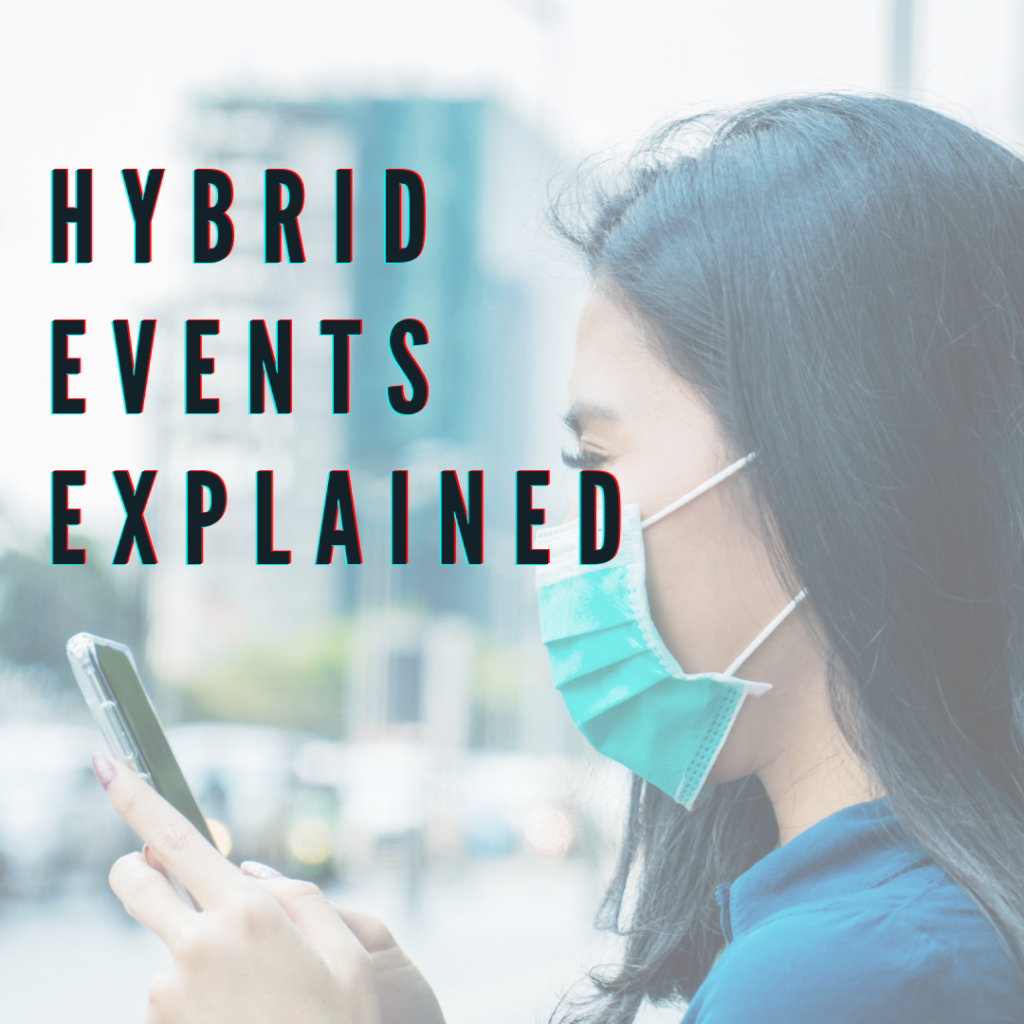We have been here before, shifting our collective focus, heading full steam ahead towards hybrid events, as people around the world slowly begin to be eased out of lockdown regulations. But this time we are heading in with the mantra that things could turn on a dime, so approach with caution.
We were optimistic towards the end of last year when restrictions began easing and excited to be able to attend an event in person again! But then the second waves hit, and back inside we all went. Restrictions were tightened and hotel quarantines imposed so we once again turned our focus solely to virtual events. This time we are cautiously optimistic, there is more reason to be this time, as more and more people throughout the world receive vaccines. Hybrid events are once again becoming an option in many parts of the globe, and we are excited to be a part of it.
As excited as we all are to hop on the hybrid train, some eventprofs may be feeling a little overwhelmed at the idea, or perhaps feeling underwhelmed by the prospect of hosting an event in two mediums. We are here to tell you that’s totally ok, and also we have got you covered. We hope to get you as excited as we are about moving into this new sphere of events. Here we will have a look at the logistics of putting together a hybrid event by answering some of the most common questions we have encountered when helping clients.
So, let’s break it down, shall we?
A hybrid event is the seamless integration of your virtual and in-person event to form a well-rounded hybrid event. This can take place concurrently or separately, it doesn’t need to be on the same day (I know, this was a big revelation for us too). It all depends on the level of attendee interaction you want and the type of experience you want to deliver.
What is needed to make your in-person event a hybrid event? A webcam and Zoom? (We get asked this ALOT) Technically you could pop a laptop in the venue pointed at the stage and let that stream to your virtual attendees on Zoom. But, and this is a big BUT, your virtual attendees are going to feel extremely underwhelmed and like they are an afterthought. For your hybrid event to be successful your virtual attendees need to feel as thought about as your in-person attendees do. So, how do you achieve that? Simple, with high production value and attendee engagement strategies. Meaning, invest in the AV and tech component of your event.
We know budgets are tight right now, but make sure you add an AV partner and an event Tech partner to your list. Content is king, right? So surely the way you deliver that content is extremely important. You want a high production value of the content you deliver to your virtual attendees, even if you have to pre-record your sessions in order to do this to fit the budget, it’s worth it.
Secondly, invest in using a virtual platform. We can not stress this enough. A virtual platform is great for so many reasons, but mostly because you can have live interactions, like Q&A and networking, and it feels different than a Webinar, Zoom, or Teams meeting.
Another question we get asked is ‘can virtual and in-person attendees interact with each other?’. The simple answer is yes, they can. If you use a virtual platform then your live and in-person attendees can interact. The question is though, is if they actually want to. Your virtual attendees can interact with the speakers via text Q&A and polls, and they can interact with each other when the in-person attendees are networking/ on a tea break.
The third question we get asked the most is ‘how much is this going to cost?’ We are all extremely budget-conscious right now, which as eventprofs we have always been, but budgets are much tighter and there is much less wiggle room than before. There are more components to a hybrid event, so the short answer is, that it will cost more than hosting a full virtual event. But when you take into account the increased reach of your hybrid event and the potential positive ROI, it is definitely worth it to include a virtual component to your live event.
We have found the best way to go about planning a hybrid event is to plan the virtual aspect first and then include your live aspect. It makes for a much more well-rounded and dynamic event and keeps both your virtual and in-person attendees from feeling like an afterthought.

